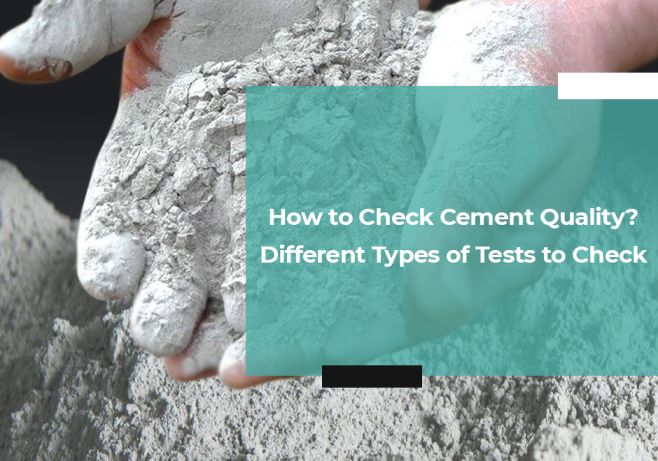Cement tests are carried out to determine the strength and characteristics of cement. Various tests on cement are currently used to determine the quality of the material. Various Cement Testing Methods are used to determine the qualities of cement, such as specific gravity, strength, fineness, consistency, and so on.
In order to assess the quality of cement, two types of tests are used. These are both field and laboratory tests.
Field Test of Cement
There are four field tests that can be used to determine the quality of cement.
- Colour
The colour of cement should be consistent. It should have a traditional cement colour, which is grey with a little greenish shade. - Physical Properties
Touching the cement between your fingertips should feel smooth.It should feel cool if the hand is plunged into a bag or lump of cement. - Presence of lumps
The cement should contain no lumps. - Strength
A thick mixture of cement and water is applied to a thick piece of glass and soaked for 24 hours. It should not crack once it has set.
The following cement tests are commonly carried out in a laboratory setting:
Fineness Test:
This test is used to ensure that cement is properly ground.
A sieve test or a permeability device test can be used to measure the fineness of cement particles. In the sieve test, 100 grams of cement is taken and continually passed through standard BIS sieve no. 9 for 15 minutes. The residue is then weighed, with the weight not exceeding 10% of the original weight.
Compressive Strength Test:
This test is used to determine the cement’s compressive strength. The cement and sand mortar is made at a 1:3 ratio.In a water-to-cement ratio of 0.4, water is added to the mortar.
Molds are used to hold the mortar. The test specimens are cubes, and the moulds are made of metals. The cement required for 70.6 mm and 76 mm cubes is 185 gm and 235 gm, respectively. The mortar is then crushed for 2 minutes in a vibrating machine before being placed in a wet cell for 24 hours.
Consistency Test:
The goal of this test is to figure out how much water is needed to make cement paste for other tests.Add 30 percent by weight, or 90 gm, of water to 300 gm of cement.
Thoroughly combine the water and cement. Gauging time should be 3.75 to 4.25 minutes after filling the Vicat apparatus mould. A needle is attached to a moveable rod with an indicator attached to the Vicat equipment. The square needle, plunger, and needle with annular collar are the three attachments available. The moveable rod is connected to the plunger. The plunger is carefully dropped into the mold’s paste.
Setting time:
This test is used to determine whether cement has deteriorated owing to storage. The test is carried out to determine the beginning and final setting times. The Vicat mould is filled with a mixture of cement, water, and cement paste. The moving rod of the Vicat device is linked to the square needle. The needle is swiftly loosened, and the cement paste is allowed to penetrate it. The needle totally penetrates the skin at first. The operation is repeated until the needle does not completely enter the skin. (up to 5mm from the bottom) For regular Portland cement, the initial setting time is 30 minutes, while for low heat cement, it is 60 minutes.
Soundness Test:
This test is used to determine if there is any uncombined lime in the cement.
It’s time to make the cement paste. The mould is in place, and cement paste is used to fill it. Another glass plate is placed on top of it. The top is weighted, and the entire structure is submerged in water for 24 hours. The distance between the indicator’s points is measured. The mould is placed in the water again, and heat is applied in such a way that the water reaches boiling point in about 30 minutes. The water is kept boiling for another hour.
Tensile strength Test:
This test was previously used to provide an indirect indicator of cement compressive strength. It’s time to make the sand and cement mortar. Water is poured into the mortar. Briquette moulds are used to hold the mortar. The mould is then filled with mortar, and a little heap of mortar is built on top of it. A normal spatula is used to pound it down until water appears on the surface. The method is repeated for the briquette’s other side. The briquettes are gently removed from the moulds after being kept damp for 24 hours.

